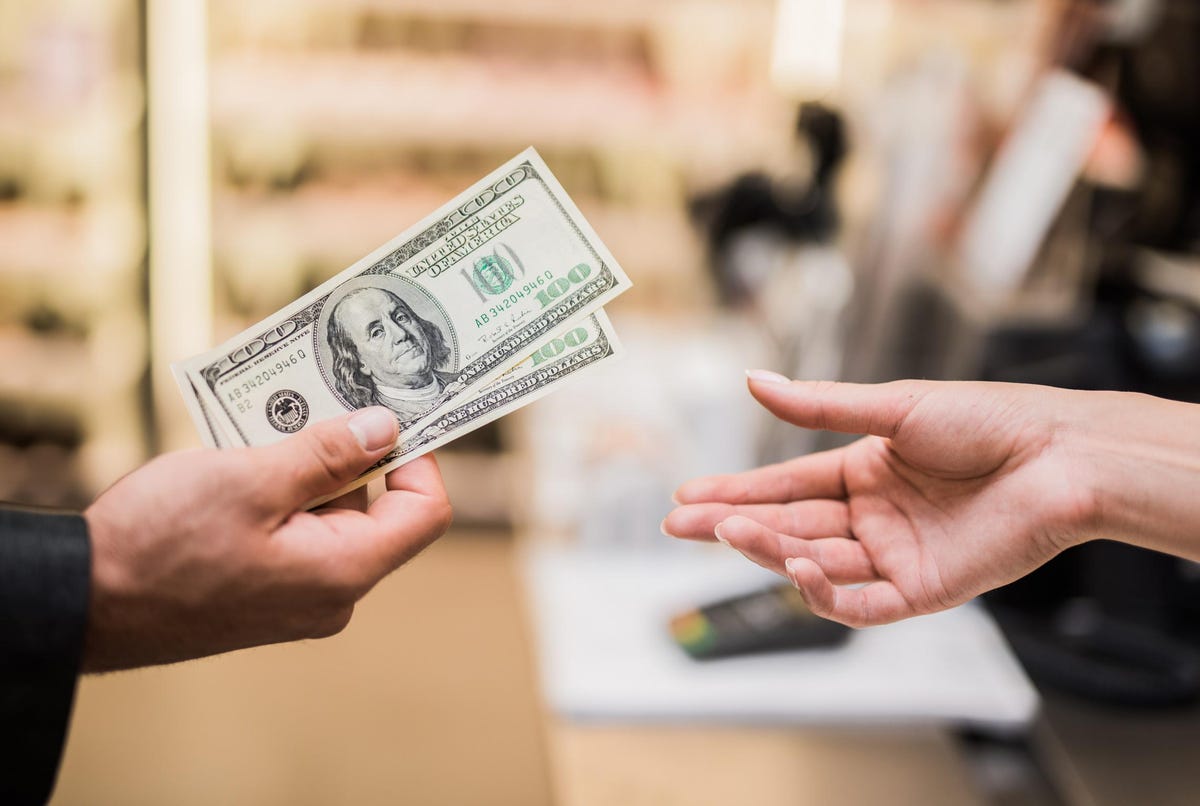Paying Cash For Healthcare? New Tool Helps You Find The Price – Forbes

Paying by cash
getty
Going to the doctor in the United States can feel like spinning a roulette wheel; you may never be sure what it will cost you.
A new service, ClearPrice™, launched this month by Solv Health, aims to change that by arming Americans with information about what they’ll have pay for care—before they book an appointment.
Solv worked with more than 5,000 urgent care providers to gather cash prices for the ten most common urgent care services, including X-rays, stitches, and different types of office visits. The company plans to add more cash-pay prices for more services throughout the year.
According to Solv CEO and cofounder Heather Fernandez, the company started with urgent care because it’s the most consumer-centric, transparent segment of the healthcare industry and publishing these cash prices underscores the impetus for price transparency.
“By focusing on the highest volume, most frequent services, our intent is to ensure that millions of consumers see and realize that paying in cash is an option and might, in fact, be the better option for them,” Fernandez said. “Once you see that a cash price exists for healthcare services, then you will ask the question, ‘How much?’ the next time.”
The cost of healthcare has become a barrier for large numbers of Americans. Fernandez calls unmanageable medical bills a “national financial crisis.”
Among U.S. adults, 51% report delaying or skipping health or dental care in the past year due to cost. As many as 50% also have medical debt.
Even people with health insurance find themselves facing financial barriers. Health insurance deductibles reached an average of $1,669 in 2021, a 68% increase over the past decade. People pay out-of-pocket for any service they need before they satisfy their deductible.
“Everyone deserves to be free from the stress of everyday healthcare,” Fernandez said. “But in America today, that’s just not the reality.”
Two-thirds of Americans worry about being able to pay for unexpected medical bills. The new No Surprises Act took effect on January 1 and should protect consumers from certain types of surprise bills. But, current legislation doesn’t yet apply to urgent care. Until it does, Solv is trying to chip away at the uncertainty Americans face about their healthcare costs.
“Since our inception, we’ve worked to answer three basic questions for consumers seeking healthcare: Where should I go? Who should I see? How much will it cost?” Fernandez said. “We won’t stop until clear prices are a normal part of healthcare—so consumers can take control of your physical and financial health.”
The new tool allows the company to help answer the third question for consumers.
For example, Solv data shows that the national average price for a chest X-ray at an urgent care center is $242, compared to $417 in a hospital. Getting stitches in an urgent care center averages $255, 25% cheaper than at a hospital.
According to Solv, the national average cost of an office visit is $142. The most expensive cities for in-office visits include Denver, San Francisco, Dayton and Cleveland, Ohio, and Spokane, Washington. In contrast, the most affordable places for in-office visits are Baton Rouge, Knoxville, Detroit, Albuquerque, and Columbus, Ohio.
The data Solv has gathered about cash prices reveals another peculiarity of the U.S. healthcare system—and another reason consumers may want to pay attention to the cash price: Paying cash can be cheaper than using insurance.
Using a mix of internal company data and third-party sources, the company notes that consumers paying cash may save nearly 50% off what they would spend using their insurance. To illustrate the point, at a New York City hospital, the self-pay rate for stitches to repair a simple wound is $544.92, compared with an insurance-negotiated rate above $1,000, according to Solv.
Quirks like this provide just some of the fodder for disruption in healthcare, which has accelerated during the pandemic. According to Fernandez, price transparency is one aspect of disruption that’s necessary—and underway.
“Price transparency is happening, whether traditional players in healthcare like it or not,” she said. “Those who cling the hardest to outdated models will be the first in line for irrelevancy.”
To Fernandez, the consumer demand for price transparency is or should also be clear.
“You wouldn’t buy groceries or gas without knowing the price, so why are healthcare costs so secret?” she said, adding that she doesn’t think it will stay this way for long. “Our aim is that American consumers will require the healthcare system to answer these questions for them, versus being left on their own to sort it out and fend for themselves.”
In the meantime, though, Fernandez urges consumers to ask how much health services will cost, whether they pay with cash or go through insurance.
“For too long, we have accepted that we can receive a surprise bill 30 to 60 days after going to the doctor, and that’s just how it works. This needs to stop,” Fernandez said. “The more consumers ask, the more that employers, insurers and providers will need to ensure that there is an answer.”







